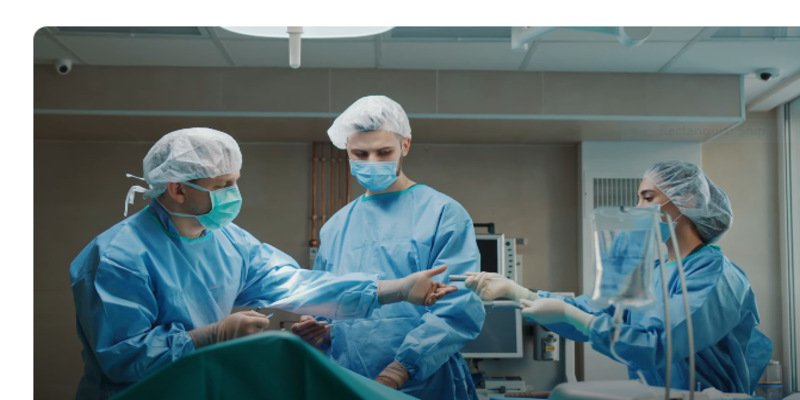If you or your loved ones have recently experienced a stroke, you may be feeling dazzled with emotion and questions like what is the Stroke Recovery Timeline or what comes next?
Recovery from a stroke is complex and unpredictable and is different for each person. Things like the type and severity of the stroke have an impact on the treatment and how long it takes to recover from a stroke.
However, current research backs up some common trends in the Stroke Rehabilitation Stages that are helpful in recovery. Below, we will discuss the factors affecting a person's recovery and provide general Stroke Recovery Milestones to help you know what comes next in the days and months ahead.

Factors That Impact Your Stroke Recovery Milestones
If you want to understand more about your Stroke Recovery timeline, consider the following factors that impact your unique recovery time.
- The size of the brain part affected by stroke
- The location or areas of the brain the stroke affected
- The level of support or aid a person receives
- The quantity and quality of care during rehabilitation
- The person's motivation
- Health of the person before the stroke
All these factors significantly impact the Stroke Recovery Process. Two main factors are the size and location of the stroke.
Regarding size, if the stroke is mild, there will be minimal damage to the brain, and recovery often occurs faster. Conversely, when the stroke is massive, as measured on the NIH Stroke Scale, the recovery process is usually slow. This is because a large stroke has more significant secondary effects. To recover from a massive stroke, the patient must participate in intensive rehabilitation to regain the functionality of the affected organs.
When it comes to location, a stroke can damage different areas of the brain. Therefore, estimating the stroke rehabilitation timeline is difficult precisely because different brain areas control various functions. Due to this, the secondary effects like motor, sensory, and cognitive effects vary.
Possible Physical and Cognitive Effects After a Stroke
When your loved one has experienced a stroke, the blood supply to their brain is either interrupted or reduced, due to which brain tissues cannot get all the oxygen or nutrients they need for their activity. Reduced oxygen supply and lack of nutrients can cause severe damage.
Not all persons experience the same effects because stroke is different for each person. But here are some of the common physical and cognitive effects that stroke patients face after a stroke.
- Paralysis or weakness of different organs
- Difficulty in speaking or language disorder such as aphasia
- Reduced locomotion or motor function
- Degenerative nervous function like impaired coordination and balance issues. Sometimes, a more severe case called Ataxia
- Pneumonia due to difficulty swallowing is called dysphagia
- Clinical depression due to emotional and behavioral changes such as anger or frustration
- Weakened cognitive efficiency
- Sensorial impairments include vision problems and reduced or lack of sensation in different body parts.
A person who has experienced a stroke is also at increased risk of having another. The Centers for Disease Control and Prevention (CDC) says a person who has had a stroke is 25% more prone to having another Stroke within the next 5 years.
Some people also face a mini-stroke called a transient ischemic attack (TIA), which is a temporary disruption of the blood flow towards a specific part of the brain. A person with TIA is at an increased risk of 17% of having another stroke within 90 days, and this risk is highest during the first week.
Stroke Recovery Timeline Milestones Different Phases of Stroke Rehabilitation Process
As we mentioned earlier, different factors affect the Stroke Rehabilitation Timeline and recovery time for survivors varies from person to person, even the survivors who experience the stroke in the same area.
With that said, it is essential to understand some critical patterns for stroke recovery stages. Along with the Brunnstrom Stages of Stroke Recovery, there are general recovery milestones that you can follow during rehabilitation. Let's discuss those Stroke Rehabilitation Phases:
Day 1: Stroke Diagnosis and Initial Treatment
- Accurate Stroke Diagnosis: A stroke is a medical emergency, and the first step toward stroke recovery milestones is accurately diagnosing the type of stroke so treatment can begin as soon as possible. When a stroke patient arrives at the hospital, the stroke team must immediately take them to a nearby imaging room for a CT scan, which helps diagnose a stroke. Before a CT scan, the patient's weight is measured, blood is drawn, lab tests are completed and more.
- Initial Treatment: The stroke may be caused by a blood clot (ischemic stroke) or a blood vessel rupture (Hemorrhage Stroke). These can be treated with clot-busting medication or surgery to control bleeding. Depending on the severity, you must spend time-intensive care. A Mechanical thrombectomy, also called endovascular therapy, may also be helpful.
The First Few Weeks After a Stroke
Typically, stroke patients are discharged from the hospital within the first five to seven days. During this period, the stroke team evaluates the effects of the stroke to make a rehabilitation plan.
The stroke effects vary from person to person, depending on the severity of the stroke and the area of the brain affected. Many stroke patients return home and continue their recovery following home-based care where therapists help them, or you get outpatient therapy through a stroke rehabilitation centre.
Physical and occupational therapy help determine the areas of the brain that are affected. These therapists work with patients to complete functions like walking. In addition, speech-language therapy helps patients with difficulty swallowing or encountering the aftereffects of a breathing tube.
First 1-3 Months of Post-Stroke Recovery Timeline
Discharge from the hospital is a significant milestone in the stroke recovery phase. But before you are discharged, your care team will collaborate to recommend the best next steps in treatment and recovery. Most patients will complete an inpatient rehabilitation program or recover through outpatient therapy sessions during this phase.
The primary goal of these sessions is to restore function as close as possible to the pre-stroke level or formulate compensation strategies to work around the functional impairments.

During the first three months, the patient might face the following phenomenon.
- Spontaneous Recovery: Spontaneous recovery is a phenomenon in which a stroke victim's brain finds new ways to perform the function lost due to the stroke.
- Anticipating Setbacks: In some cases, the patient will face setbacks like pneumonia, a heart attack, or a second stroke after the first few months of a stroke. Setbacks disturb patients physically, mentally, or emotionally.
- Non-Invasive Brain Stimulation: Stroke rehabilitation involves physical, occupational, and speech therapies as the main components, but researchers also find new techniques to enhance the treatment process. One such technique is non-invasive brain stimulation (NIBS), which uses weak electrical currents to stimulate the areas of the brain associated with specific tasks. Another method is injectable enzymes to treat muscle stiffness and avoid muscle weakness.
The 6-Month Recovery Goals and Beyond
Depending on which rehabilitation process was selected for the first three months after getting discharged from the hospital, many stroke patients have completed at least one rehabilitation program within the first six months after a stroke.
The stroke care team works with patients regularly during inpatient or outpatient skilled nursing therapy programs. However, once the patient is discharged, it does not mean they need stroke care. Therefore, it is crucial to build a relationship with both primary and specialists who can ensure ongoing care.

- A Vascular Neurologist: They specialize in treating strokes and other cerebrovascular diseases. Along with diagnosing and treating strokes, they can also provide post-stroke care.
- A Mental Health Professional: A mental health specialist like a psychiatrist can help patients fight anxiety, depression, and other challenges or long-lasting effects from a stroke.
- Primary Care Physician: A primary care physician can help you manage health concerns from allergies to common cold skin rashes. They can help manage stroke risk factors.
- A Speech Therapist: A speech-language therapist can help patients overcome difficulty speaking or language disorders.
After the first 6 months' recovery milestones, many stroke survivors have completed their rehabilitation therapy processes. Around the one-year mark after a stroke, some may be back to their old selves, while others with chronic strokes are adjusting to some new limitations and following specific therapy techniques at home.
Ensure continuous progress by taking advantage of local stroke support groups. These groups understand what it's like to experience a stroke and provide empathy, support, and even a little inspiration when it matters most.
Final Words
In conclusion, the Stroke Recovery Timeline includes every step the care team takes as healing and recovery from the minute you or your loved one arrives at the hospital after experiencing a stroke.
This article lists stroke rehabilitation programs that include various physical and neurological therapies to help patients recover quickly. Each program is specifically designed to help achieve the best possible results for each stroke patient, whether in the hospital, transitional care, or home.

Benefits of Bitter Melon
Oct 16, 2023

What You Should Know About Idiopathic Pulmonary Fibrosis (IPF)
Dec 21, 2023

What Is Stage 3 Colon Cancer
Feb 03, 2024

What is Blue Light
Jan 09, 2024

How Does Retinol Work
Nov 08, 2023

Why Should You Choose A High-Deductible Health Plan?
Jan 13, 2024

Benefits of Red Sandalwood
Oct 11, 2023

How Many Calories Should You Eat Per Day To Lose Weight
Feb 02, 2024



